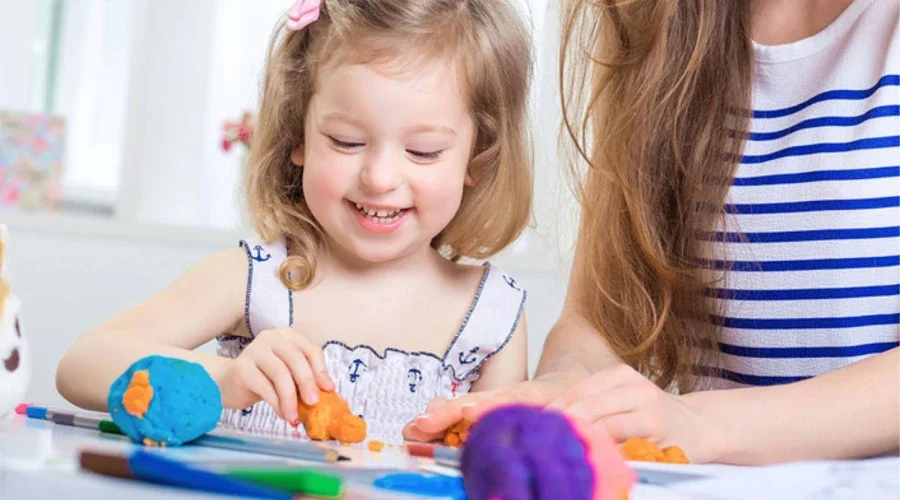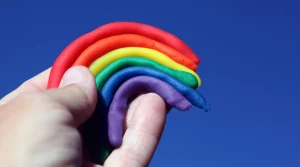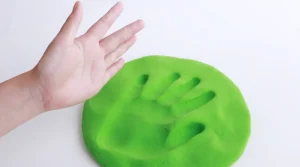
What Is the Science Behind Playdough? Uncover the Chemistry
What makes playdough soft, stretchy, and long-lasting? Explore the chemistry and physics behind this classic sensory material in a fun way.
#1 Toys Manufacturer in China. WhatsApp: +86 180-0088-4063. Email: [email protected]
#1 Toys Manufacturer in China. WhatsApp: +86 180-0088-4063. Email: [email protected]

Educational toys play a vital role in shaping a 3-year-old’s growth. At this stage, children are learning new skills quickly, and the right toys can support this development. Toys like playdough, for example, help children build creativity, fine motor skills, and problem-solving abilities.
At the age of three, children experience rapid growth in their cognitive and motor skills. This is a critical period where they start to understand the world around them.
Educational toys, like playdough, play a crucial role in stimulating these skills. Through play, children learn to solve problems, think creatively, and interact with others. Playdough, for example, encourages children to use their hands and fingers, strengthening fine motor skills while they shape and mold.
When choosing educational toys for three-year-olds, it’s important to focus on specific features that support their development. These toys should not only be fun but also align with key milestones children are reaching at this stage.
Toys designed for three-year-olds are tailored to support their developmental milestones. At this age, children are working on improving their fine motor skills, such as hand-eye coordination and finger dexterity.
Playdough is a great example of a toy that encourages these skills as children roll, squeeze, and shape the dough. Additionally, educational toys should help expand language skills by introducing new words and concepts through play.
Toys like building blocks or shape sorters can teach early math concepts while encouraging problem-solving and creativity.
When selecting educational toys, safety is always a top priority. Toys for young children should be made from non-toxic, child-friendly materials that meet safety standards.
Playdough, for example, is often made from safe, eco-friendly ingredients that are tested to ensure they don’t pose harm.
Certifications like ISO/EN71/ASTM are indicators that the toy has passed rigorous safety tests. This ensures that toys are free from harmful chemicals and are safe for children to play with, giving parents peace of mind.
Educational toys that engage multiple senses provide a richer, more engaging playtime experience for children. Toys that stimulate touch, sight, and sound help in the development of sensory processing.
Playdough, for instance, offers tactile sensory stimulation as children feel its smooth or textured surface. Similarly, toys like textured blocks or simple musical instruments engage multiple senses at once, helping children explore different textures, sounds, and colors.
These types of toys encourage exploration, promote curiosity, and contribute to cognitive growth by activating various parts of the brain simultaneously.
When choosing the best educational toys for three-year-olds, it’s essential to focus on products that foster both fun and learning. The toys should stimulate creativity, help children develop motor skills, and introduce them to new concepts.
Playdough is more than just a fun activity for kids; it’s a tool that contributes to their development in various ways. As a hands-on learning experience, it supports cognitive, motor, and social skills, making it one of the best educational toys for 3-year-olds.
Rolling, squishing, and cutting playdough exercises the small muscles in the hands, improving hand-eye coordination. These actions strengthen the fingers, preparing children for tasks like writing or using utensils.
As they manipulate the dough, children develop the dexterity needed for other daily activities.
Playdough also encourages precision when cutting or molding shapes, helping them focus on fine movements.
>> Top 5 Playdough Sets for Creative Play
Playdough sparks imagination. Kids can shape it into anything they can dream up, from animals to entire worlds. This creative freedom helps children express their ideas and explore new concepts.
Whether they are building houses, creating characters, or designing landscapes, they’re developing problem-solving skills and learning to think outside the box.
Educational playdough sets, such as those with molds or stamps, can also guide them in creating specific items while still allowing room for imagination.
Playdough offers an interactive way to learn basic concepts. Children can explore shapes by using different molds, learning to recognize and sort circles, squares, and triangles. It’s also an engaging way to introduce colors, as kids mix and combine different hues, enhancing their understanding of color blending.
Playdough can even help teach numbers, as many kits come with number molds, encouraging early math skills like counting and number recognition.
Playdough encourages cooperative play, especially in group settings. As children share materials and take turns, they practice patience and communication.
Building something together requires teamwork, whether it’s creating a shared playdough model or following a group project. These interactions help 3-year-olds develop social skills such as sharing, negotiating, and listening, which are essential for their emotional growth and success in group settings.
Choosing the right educational toys for your child isn’t always straightforward. With so many options available, it’s important to consider factors that support your child’s growth while keeping their interests in mind.
>> Modeling Clay vs Playdough – Best for Little Artists
To select the most suitable toys, consider where your child is in their developmental journey. At 3 years old, children are expanding their fine motor skills, language abilities, and social understanding.
Toys like playdough sets or building blocks can engage their curiosity while also supporting these developmental stages.
For example, if your child enjoys stacking and arranging things, construction toys like wooden blocks or playdough with molds will encourage their skills in both hand-eye coordination and spatial reasoning. Matching toys to their current abilities allows them to stay engaged and challenged without feeling overwhelmed.
Open-ended toys are ideal because they encourage creativity and grow with your child. These toys, such as playdough, allow for endless possibilities in how they can be used.
A single set of playdough can be molded into anything a child imagines—an animal, a vehicle, or even a mini landscape. These types of toys not only spark creativity but also provide long-term value.
As children’s skills develop, they can continue to explore and discover new ways to play. When selecting educational toys, look for ones that are versatile and adaptable to your child’s evolving interests.
To ensure the safety and quality of the toys, always check for reviews and certifications. Read feedback from other parents to see how well a toy has worked for children in similar age groups.
Additionally, look for certifications like ISO, EN71, or ASTM, especially for toys like playdough. These safety standards indicate that the toy has been tested for harmful substances and is safe for your child.
High-quality, durable toys will withstand the wear and tear of play, ensuring that they last while also maintaining their educational value.
Educational toys can be powerful tools in a child’s development, but how they are used is just as important as what is chosen. To make the most of these toys, consider how you integrate them into daily activities.
To maximize the benefits of educational toys, create a designated play area that is organized and accessible. This allows your child to freely explore their toys without distractions.
>> Playdough Tools & Accessories You Didn’t Know You Needed
For example, keep playdough sets in clear containers, so your child can easily see and access the colors and tools. An environment that encourages curiosity and independence helps your child feel empowered. A simple, clean space with organized toys can promote focus and creativity.
Adults play an important role when it comes to using educational toys. Engaging with your child during playtime can make the experience more meaningful.
For example, while playing with building blocks or playdough, you can ask open-ended questions to guide their thinking.
Playing alongside your child also fosters communication, enhances bonding, and creates a shared learning experience. Your involvement not only helps them understand how to use the toys but also nurtures their social and emotional development.
Striking the right balance between structured learning and free play is essential. Educational toys like playdough can be used in various ways—sometimes for guided learning (e.g., practicing shapes and colors) and other times for imaginative play (e.g., creating animals or objects).
Allowing your child to engage in both types of play helps maintain their interest while fostering different skill sets.
Structured activities can focus on particular skills, but leaving room for free play encourages creativity and self-expression. This mix of fun and learning helps maintain a positive and engaging environment for your child to thrive in.
Choosing the best educational toys for 3-year-olds involves selecting items that align with their developmental stage, spark creativity, and encourage learning through play. Whether it’s playdough sets, building blocks, or STEM toys, the right toys can enhance your child’s skills while keeping them engaged and entertained.
When choosing toys, consider your child’s developmental needs. Look for toys that help improve motor skills, encourage problem-solving, and stimulate imagination. Toys that involve simple puzzles, building blocks, or sensory experiences like playdough are ideal for this age. Always ensure that the toy is safe and age-appropriate.
Electronic toys can be helpful, but balance is key. They can teach basic concepts like numbers or letters and enhance cognitive skills. However, it's essential to limit screen time and encourage physical play, like using building blocks or playdough, to promote hands-on learning and creativity.
Always check for certifications like ISO, EN71, or ASTM, which ensure the toy meets safety standards. Additionally, choose non-toxic materials, and avoid small parts that could be a choking hazard. Read reviews and product details to ensure the toy is designed specifically for 3-year-olds.
While educational toys are valuable tools for learning, they should complement traditional methods like reading and real-world experiences. Toys help reinforce lessons, but active involvement from parents and caregivers in guiding learning through conversation and activities is also essential for proper development.
Playdough is a versatile tool for learning. It can help teach shapes, colors, and even basic math through activities like counting and sorting. Let your child explore different textures, roll shapes, and create objects that reflect their imagination. It’s a fun way to strengthen fine motor skills while learning.
More Related...

What makes playdough soft, stretchy, and long-lasting? Explore the chemistry and physics behind this classic sensory material in a fun way.

Mixing playdough and slime: science, textures, and creative fun for kids. Learn what happens when these sensory materials come together!

Maximize your playdough and air dry clay’s freshness with easy storage tips and tricks that keep them soft and ready to use.

Playdough is a good craft toy, especially suitable for children aged 3+ to develop hands-on skills. Now let’s make a cute caterpillar craft.

Our team will answer your inquiries within 48 hours.
Copyright © 2025 GuangDong AKIA Technology Co,. Ltd. All Rights Reserved